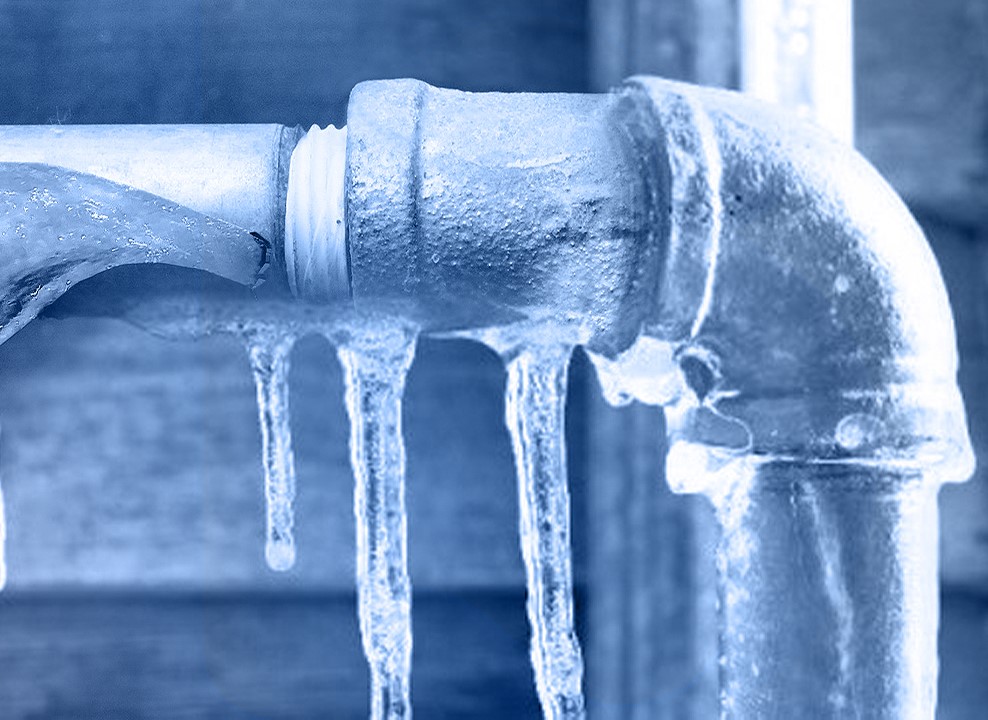Essential Advice to Protect Against Frozen Pipes in Cold Weather
Essential Advice to Protect Against Frozen Pipes in Cold Weather
Blog Article
They are making a number of great pointers relating to 6 Ways to Prevent Frozen Pipes in general in the article underneath.

Cold weather can damage your plumbing, especially by freezing pipes. Right here's how to prevent it from taking place and what to do if it does.
Intro
As temperature levels decrease, the danger of frozen pipes rises, possibly bring about expensive repair services and water damage. Comprehending how to stop icy pipes is vital for house owners in cold environments.
Prevention Tips
Shielding vulnerable pipes
Cover pipes in insulation sleeves or use warmth tape to shield them from freezing temperature levels. Focus on pipelines in unheated or outside locations of the home.
Heating strategies
Keep interior rooms sufficiently heated, especially locations with plumbing. Open closet doors to allow cozy air to circulate around pipelines under sinks.
Exactly how to recognize icy pipelines
Look for lowered water circulation from taps, unusual smells or sounds from pipes, and visible frost on subjected pipes.
Long-Term Solutions
Structural changes
Consider rerouting pipes away from outside walls or unheated areas. Include added insulation to attics, basements, and crawl spaces.
Upgrading insulation
Buy high-grade insulation for pipelines, attics, and wall surfaces. Correct insulation helps keep constant temperature levels and decreases the danger of frozen pipelines.
Securing Outdoor Plumbing
Yard hose pipes and outdoor faucets
Disconnect and drain garden hose pipes before winter. Set up frost-proof spigots or cover exterior taps with insulated caps.
Understanding Icy Pipes
What causes pipes to ice up?
Pipes freeze when exposed to temperature levels listed below 32 ° F (0 ° C) for expanded periods. As water inside the pipes freezes, it broadens, taxing the pipe wall surfaces and possibly triggering them to burst.
Risks and problems
Frozen pipes can result in water interruptions, property damages, and pricey fixings. Ruptured pipes can flood homes and create considerable structural damages.
Indicators of Frozen Pipes
Identifying icy pipelines early can prevent them from bursting.
What to Do If Your Pipelines Freeze
Immediate actions to take
If you suspect icy pipelines, keep taps open to soothe pressure as the ice melts. Use a hairdryer or towels taken in warm water to thaw pipes slowly.
Final thought
Avoiding frozen pipelines requires positive actions and quick responses. By comprehending the reasons, indicators, and preventive measures, home owners can secure their plumbing during cold weather.
5 Ways to Prevent Frozen Pipes
Drain Outdoor Faucets and Disconnect Hoses
First, close the shut-off valve that controls the flow of water in the pipe to your outdoor faucet. Then, head outside to disconnect and drain your hose and open the outdoor faucet to allow the water to completely drain out of the line. Turn off the faucet when done. Finally, head back to the shut-off valve and drain the remaining water inside the pipe into a bucket or container. Additionally, if you have a home irrigation system, you should consider hiring an expert to clear the system of water each year.
Insulate Pipes
One of the best and most cost-effective methods for preventing frozen water pipes is to wrap your pipes with insulation. This is especially important for areas in your home that aren’t exposed to heat, such as an attic. We suggest using foam sleeves, which can typically be found at your local hardware store.
Keep Heat Running at 65
Your pipes are located inside your walls, and the temperature there is much colder than the rest of the house. To prevent your pipes from freezing, The Insurance Information Institute suggests that you keep your home heated to at least 65 degrees, even when traveling. You may want to invest in smart devices that can keep an eye on the temperature in your home while you’re away.
Leave Water Dripping
Moving water — even a small trickle — can prevent ice from forming inside your pipes. When freezing temps are imminent, start a drip of water from all faucets that serve exposed pipes. Leaving a few faucets running will also help relieve pressure inside the pipes and help prevent a rupture if the water inside freezes.
Open Cupboard Doors
Warm your kitchen and bathroom pipes by opening cupboards and vanities. You should also leave your interior doors ajar to help warm air circulate evenly throughout your home.

We were brought to that report on How To Avoid Freezing Pipes from a pal on another blog. In case you liked our blog post kindly don't forget to share it. We value reading our article about How to Prevent Your Pipes From Freezing.
Click Here Report this page